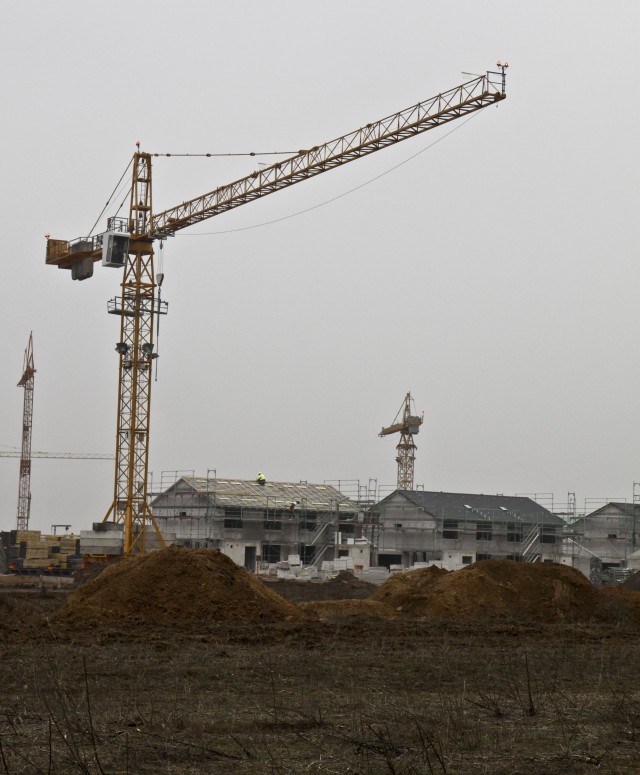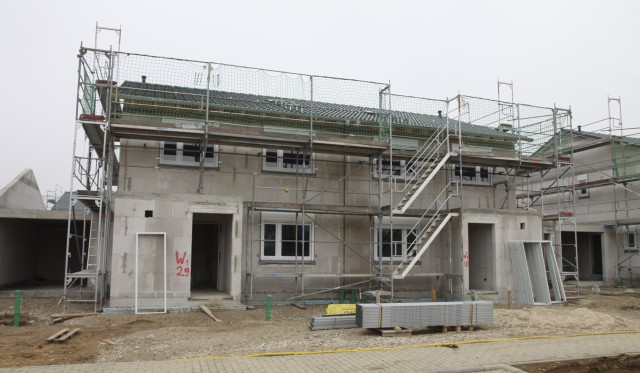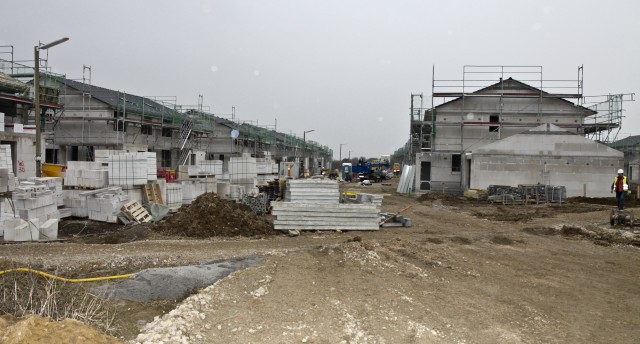WIESBADEN, Germany - A whole new neighborhood is under construction at the U.S. Army Garrison Wiesbaden, where 326 three- and four- bedroom townhouses are being built to improve the quality-of-life for Soldiers and their families stationed here.
The new houses, which replace 98 existing stairwell and duplex-style apartments, have attached garages, efficient heating and cooling systems, and patios or decks, said Jay Martinek, the U.S. Army Corps of Engineers Europe District project engineer overseeing the project. Each unit also has a small front yard and an area for additional storage.
"From a quality-of-life standpoint, the townhouses range from 120 to 160 square meters in size, so they should be comfortable for average-sized families," Martinek said which equates to roughly 1,300 to 1,700 square feet. "They will be living in an area with a lot of fresh air, fields on two sides and a creek on the other, so it will be nice and quiet. They will be able to hear birds chirping and see rabbits jumping. ... There is going to be a lot of open space, plenty of room for kids to run and play."
Martinek said the community will resemble an American or German suburb, complete with all the essential suburban amenities. Once the project enters its final stage, there will be bus pick-up areas, playgrounds, a jogging path, and two lighted sports fields, one for soccer and other for softball.
"We [the district] are building a neighborhood, a whole community," Martinek said of the $133 million project.
Inside the townhouses, each unit has a large laundry room, built-in closets and a modern kitchen with 110 and 220 voltage outlets to accommodate both German and American appliances.
Safety and accessibility were also considered, Martinek said. Each home is equipped with hard-wired, interconnected smoke and carbon monoxide detectors.
Five percent of the units are designed to accommodate the Architectural Barriers Act building standards.
The ABA Act of 1968 requires facilities to be accessible to people with disabilities and those requirements have been incorporated into 17 specially designed homes that include access ramping at the front door, wheel chair accessible showers and hold bars in the bathrooms and sinks mounted without cabinets underneath for wheelchair access.
Sibylle Ballnath, the project's manager, said the project also takes energy consumption into consideration.
"Since the townhouses adhere to newer German energy standards, they provide increased energy efficiency," Ballnath said. "We build in accordance with to the 2009 German EnEV energy-saving standards, which are higher than American standards, and higher than what was previously being used here."
Strict environmental criteria regulates that units meet the Leadership in Energy and Environmental Design or LEED Silver rating. The use of selective materials, water and energy efficiencies and the sustainability of the surrounding environment are all considerations in determining the rating.
Ballnath said that the installation of solar panels to heat water is another consideration to help conserve energy during peak shower times.
When complete in late 2012, the project will span over more than 100 acres of land. The project also includes new roads, perimeter fencing, landscaping, and all the associated utilities needed for a community of that size.
"It's a good project to work on. It's a lot of fun," Martinek said.






Social Sharing